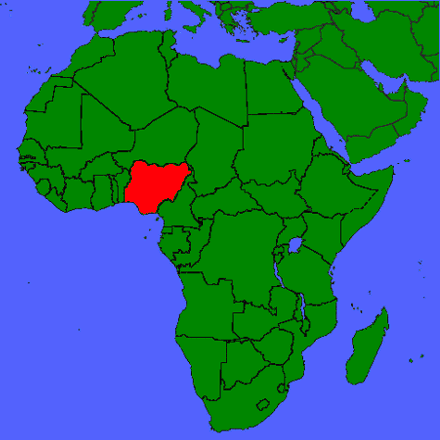
Circle the area on this map

B. It is an Islamic extremist group based in northeastern Nigeria which reportedly had links to al-Qaeda and since has announced its allegiance to the Islamic State. Since fighting began in 2009, Boko Haram has killed an estimated 20,000 people and displaced about 2 million people. Nigeria is 50% Muslim and 40% Christian.
A. Planned as a capital city located in the middle of the country, Abuja was built mostly in the 1980s and officially became Nigeria’s capital in 1991. It replaced Lagos which remains the nation’s largest city. Lagos is an Atlantic port in the mostly Christian southern half of Nigeria.
C. Boko Haram militants conducted a number of attacks on villages located within northern Cameroon, killing at least 40 government soldiers and recruiting hundreds of people into the organization. Nigeria is bordered by Cameroon and Chad to the east, Niger to the north, Benin to the west and the Atlantic to the south.
D. About 70% of Nigeria’s 186 million people live in poverty, many subsisting on less than $1 a day. With the second-largest oil reserves in Africa, Nigeria has the continent’s largest economy and a GDP of more than $1 trillion. Despite a life expectancy of 53.4 years and one of the highest infant mortality rates, the population is expected to double by 2050.